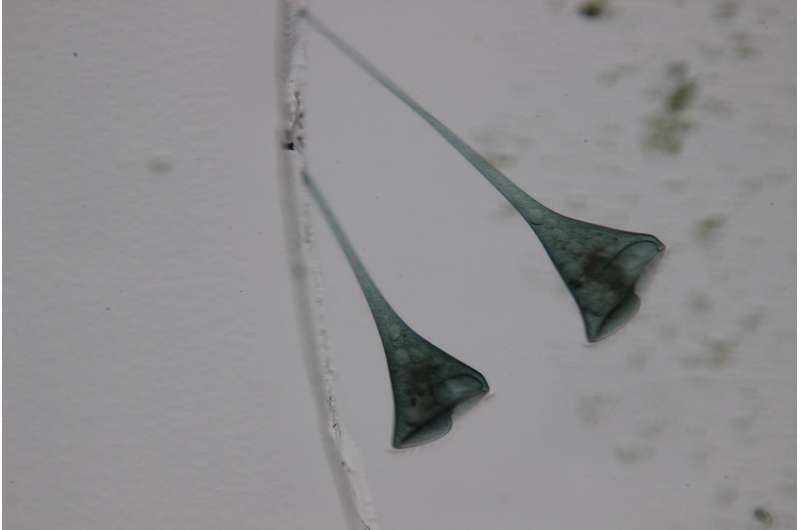New insights on how cells regrow after being sliced in half

For a single celled organism, as with many cells, cell shape is critical to the functions it can perform. However, little is known about how cells regain proper shape after an injury. In a new study being presented at The Allied Genetics Conference in Orlando, Florida, researchers report new insights about the underlying drivers that help cells heal and maintain their shape.
The study investigates similarities between the process cells use to regenerate after being sliced in half and the process they use to replicate themselves by dividing in two. The researchers were able to manipulate the enzymes involved in regeneration to speed up this process.
The research focuses on Stentor, a class of single celled organisms found near the bottom of freshwater ponds, streams and lakes. Stentor has a trumpet shaped body with a tail on one end and a mouth on the other. The tail allows Stentor to attach itself to the bottom of the body of water, while the mouth samples available food and selects what to eat, an exceptional ability in a single celled organism.
"I'm interested in understanding how single cells maintain their proper shape," said Athena Lin, graduate student at the University of California, San Francisco, and lead researcher on the project. "Stentor cells are unique because if you cut them in half, removing the mouth, they will regenerate it."
Stentor goes through two events to replace its mouth if the cell is severed. During the first phase, the material that will become the new mouth moves into the proper place along the cell. In the second phase, the cell's nucleus, containing its DNA, changes shape. Lin observed that this change in nucleus shape is similar to what occurs during cell division and hypothesized that there may be similar underlying mechanisms behind cell division and regeneration.
Lin began by studying substances that are able to alter or stop cell division, called inhibitors. For example, in cancer treatment, inhibitors are used to stop the division of affected cells, thus slowing the disease's progression. In preliminary work, Lin and her colleagues tested some of these inhibitors to identify what contributes to Stentor's regeneration.
These tests revealed that an enzyme called Aurora kinase plays a key role in Stentor regeneration. Aurora kinase has many subtypes, but is generally known for its role in cell division—an additional link between regeneration and division that helped to confirm Lin was on to something.
"These observations were not enough evidence to say that cell division and regeneration have similar pathways, but it gave us a hypothesis to start testing," Lin said.
She then discovered that if she inhibited one of the Aurora kinases, it actually sped up regeneration in Stentor.
Processes like regeneration and cell division can be slow. The cell has a built-in system of checks that need to be met before continuing on to the next phase. However, for regeneration, which does not require the cell to completely split in two but simply to heal, some of these check points may be unnecessary.
"The cell puts up a stop sign on the regeneration pathway that serves as a 'wait, I'm not ready yet' sign," Lin said, speculating that if the stop sign is removed, "that will speed up traffic, in this case speeding up regeneration." Inhibiting this Aurora kinase removes the stop sign and allows the healing process to speed up with seemingly no negative side effects.
Lin also found that inhibiting a different type of Aurora kinase completely suppressed Stentor's regeneration. Her next step is to identify which of the cell's proteins interact with the two different Aurora kinases to understand how these enzymes have such different roles in regeneration. Her hope is that this fundamental understanding of Stentor's regeneration process will help clarify the connections between regeneration and cell division, leading to new, broader insights about how cells produce and maintain their shape.




















